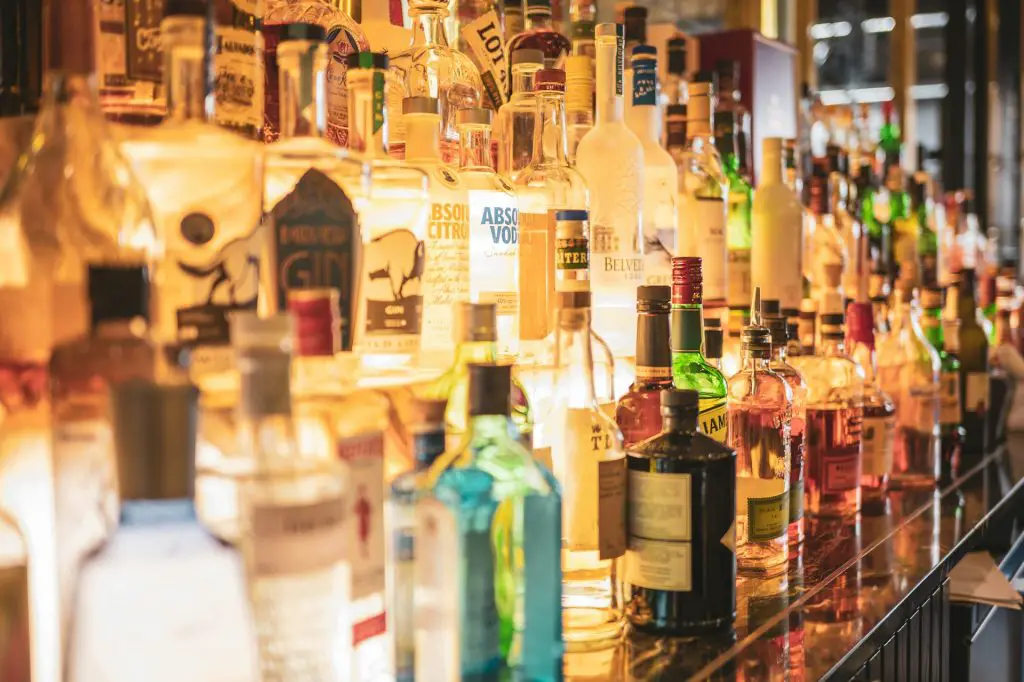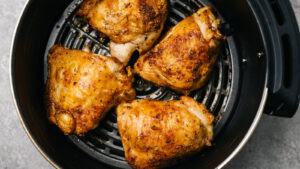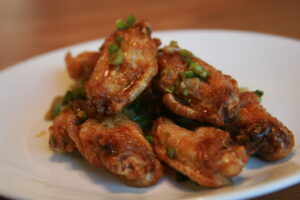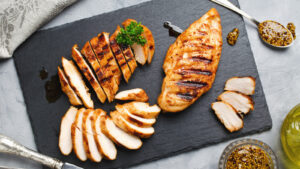In recent years, there has been a remarkable shift in the way people approach their drinking habits. The trend of consuming non-alcoholic beverages and the emergence of dry bars has gained significant momentum, signaling a cultural shift away from traditional alcoholic drinks. This shift is driven by a multitude of factors, including health-conscious choices, the desire for more inclusive social spaces, and the growing market for sophisticated non-alcoholic alternatives. In this article, we will delve into the rising popularity of non-alcoholic beverages and explore the fascinating world of dry bars.
The Health-Conscious Revolution
One of the primary drivers behind the increasing popularity of non-alcoholic beverages and dry bars is the global trend towards healthier lifestyles. As people become more health-conscious, they are reevaluating their drinking habits. Excessive alcohol consumption has long been associated with various health issues, including liver disease, heart problems, and increased cancer risk. As a result, many individuals are seeking alternatives to alcohol that allow them to enjoy socializing without compromising their health.
Non-alcoholic beverages offer an attractive solution to this dilemma. Gone are the days when non-alcoholic options consisted of uninspiring choices like water or soda. Today, the market is flooded with a wide array of sophisticated, alcohol-free alternatives, ranging from alcohol-free beers and wines to artisanal craft cocktails. These beverages mimic the flavors and complexity of traditional alcoholic drinks, providing a satisfying experience without the negative health effects.
The Rise of Dry Bars
Parallel to the surge in non-alcoholic beverage consumption is the emergence of dry bars. Dry bars are establishments that exclusively serve non-alcoholic drinks, creating a welcoming environment for people who want to enjoy a night out without alcohol. These bars offer a unique social space that caters to a diverse clientele, including those in recovery, designated drivers, and individuals who simply prefer non-alcoholic options.
Dry bars are more than just a response to changing drinking habits; they represent a cultural shift towards inclusivity. Traditionally, bars have been spaces primarily centered around alcohol consumption, often making non-drinkers feel left out or uncomfortable. Dry bars challenge this norm by providing an environment where everyone can feel welcome and have a good time, regardless of their drinking preferences.
The Craft of Non-Alcoholic Mixology
At the heart of the non-alcoholic beverage trend is the art of mixology. Skilled mixologists are now creating intricate and flavorful non-alcoholic cocktails that rival their alcoholic counterparts. These mixologists use a variety of techniques, including muddling, infusions, and garnishes, to craft innovative and appealing drinks that cater to a wide range of tastes.
One of the key elements in the craft of non-alcoholic mixology is the use of high-quality ingredients. Fresh fruits, herbs, and botanicals are often featured prominently in these drinks, creating a sensory experience that goes beyond the ordinary. From zesty virgin mojitos to complex alcohol-free negronis, the world of non-alcoholic mixology is full of delightful surprises for the palate.
The Social Aspect of Dry Bars
Dry bars aren’t just about serving great drinks; they also emphasize the social aspect of going out. These establishments are designed to provide a vibrant and comfortable atmosphere where patrons can gather, relax, and socialize. Live music, board games, and themed events are often part of the experience, making dry bars more than just a place to grab a drink – they are destinations for social engagement.
Moreover, dry bars are becoming popular choices for social gatherings and celebrations. Many people are choosing dry bars as venues for birthdays, anniversaries, and other special occasions because they offer a unique and inclusive setting. This shift away from alcohol-centric celebrations is reflective of changing societal norms and values.
Economic Opportunities in the Dry Bar Industry
The rise of dry bars presents exciting economic opportunities for entrepreneurs and investors. As the demand for non-alcoholic options continues to grow, so does the potential for profitable business ventures. Dry bars have the advantage of catering to a diverse clientele, which can result in a stable customer base.
Entrepreneurs looking to enter the dry bar industry can explore various business models, from standalone dry bars to adding non-alcoholic options to existing bars and restaurants. The key to success in this industry lies in offering a compelling and diverse menu of non-alcoholic beverages, creating an inviting atmosphere, and marketing effectively to reach the target audience.
Challenges and Future Outlook
While the trend of non-alcoholic beverages and dry bars is on the rise, there are challenges to be navigated. One challenge is changing societal attitudes towards drinking and the stigma sometimes associated with choosing not to consume alcohol. It’s essential to promote inclusivity and educate the public about the benefits of non-alcoholic options.
Another challenge is the need for continuous innovation in the non-alcoholic beverage industry. As consumers become more discerning, there is a growing demand for new and exciting flavors and combinations. Keeping up with these evolving tastes is crucial for businesses in this sector.
Looking ahead, the future of non-alcoholic beverages and dry bars seems promising. As the health-conscious trend continues to gain momentum and more people seek alternatives to alcohol, the market for non-alcoholic drinks and dry bar experiences is likely to expand. This growth opens up opportunities for creative entrepreneurs, mixologists, and investors who can tap into this evolving industry.
The rising trend of non-alcoholic beverages and the emergence of dry bars are transforming the way people socialize and enjoy their leisure time. These trends reflect a broader shift towards healthier lifestyles, inclusivity, and a desire for sophisticated non-alcoholic options. Whether you’re in search of a healthier alternative, a welcoming social space, or an exciting business opportunity, the world of non-alcoholic beverages and dry bars offers something for everyone. As the industry continues to evolve, it promises to shape our drinking culture in new and exciting ways, making it a trend worth toasting to.
The societal shift towards non-alcoholic beverages and dry bars is not limited to a specific demographic or region. It’s a global phenomenon that transcends borders and cultures. In countries where alcohol consumption has traditionally played a significant role in social gatherings and celebrations, the rise of non-alcoholic alternatives and dry bars is particularly noteworthy.
In some cultures, there is a deep-rooted tradition of alcohol consumption, and it can be challenging to break away from those norms. However, the growing awareness of the health implications associated with excessive drinking is prompting individuals and communities to reevaluate their relationship with alcohol. Non-alcoholic beverages and dry bars provide a bridge between tradition and modernity, allowing people to enjoy social interactions without compromising their well-being.
For individuals in recovery from alcohol addiction, dry bars offer a lifeline to social engagement without the risk of relapse. These spaces provide a supportive environment where people in recovery can connect with others who share similar experiences, all while enjoying the camaraderie of socializing without alcohol. The sense of belonging and the opportunity to rebuild social networks are invaluable aspects of recovery, and dry bars contribute to these vital processes.
Furthermore, the emergence of non-alcoholic beverages and dry bars has created a ripple effect in the hospitality industry. Restaurants and bars that once focused exclusively on alcoholic offerings are now diversifying their menus to include a robust selection of non-alcoholic drinks. This shift has made dining experiences more inclusive, allowing non-drinkers to enjoy a wider range of culinary delights paired with thoughtfully crafted non-alcoholic beverages.
Non-alcoholic cocktails, often referred to as “mocktails,” are gaining popularity in upscale dining establishments. These drinks are designed to complement the flavors of gourmet dishes, enhancing the overall dining experience. As more chefs and mixologists embrace the art of non-alcoholic mixology, the boundaries of culinary innovation continue to expand.
The marketing of non-alcoholic beverages has also evolved to reflect changing consumer preferences. Brands are investing in sophisticated packaging and branding that position non-alcoholic drinks as premium products. This approach not only attracts discerning consumers but also helps remove the stigma associated with choosing non-alcoholic options.
In addition to their health benefits, non-alcoholic beverages offer a unique opportunity for exploration and experimentation. Many individuals are drawn to the world of alcohol-free drinks for the sheer enjoyment of trying new flavors and combinations. The absence of alcohol allows for a more nuanced appreciation of the intricate flavors and aromas present in these drinks.
As the popularity of non-alcoholic beverages and dry bars continues to rise, it’s essential to emphasize responsible consumption in this domain as well. While these drinks offer a safer alternative to traditional alcoholic beverages, excessive consumption of sugary or high-calorie non-alcoholic options can have its own health implications. Educating consumers about making informed choices and finding a balance that suits their individual preferences and dietary needs is essential.
In conclusion, the rising trend of non-alcoholic beverages and the emergence of dry bars represent a significant cultural shift towards healthier, more inclusive, and sophisticated drinking options. These trends are reshaping social norms, creating economic opportunities, and fostering a greater sense of inclusivity in our society. Whether you’re someone looking for a delicious alcohol-free alternative, an entrepreneur seeking a thriving business venture, or simply an advocate for healthier living, the world of non-alcoholic beverages and dry bars has much to offer. As these trends continue to evolve, they will undoubtedly leave a lasting mark on our drinking culture, encouraging more mindful and enjoyable ways to celebrate life and connect with one another.




